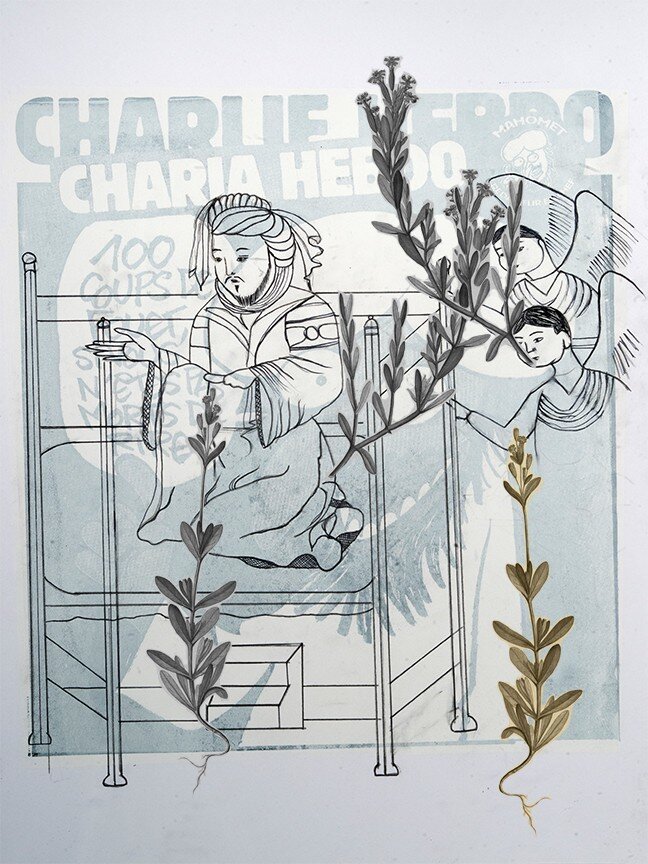PALIMPSEST: the MOHAMMED SERIES
Screen prints and drawing, 2017
In Palimpsest: The Mohammed Series (2016), I navigated tensions, complexities, and contradictions linked to representational practices within Islam, and about Islam. This project charted a nonlinear, unwritten history of both Western and non-Western representations of Islam. Through a process of layering, erasure, and juxtaposing images from disparate origins, times, and authors, this project makes visible narrative arcs that have been made invisible, ignored, or forgotten. These narrative constructs include modern time assumptions (by both Muslims and non-muslims) that there is a opposition to depicting religious human figures in the image-rich tradition of Islam.
The images that I appropriated for Palimpsest: The Mohammed Series include the controversial contemporary caricatures of the Prophet Mohammed that appeared in the Charlie Hebdo magazine. As restitution of the caricatures of the Islamic practices of representation, and as a performative gesture, I whitewashed the Mohammed caricatures and drew over them representations of Mohammed drawn by Muslim artists in Iran (1600s) and Somalia (1920s). These images represent aspects of Mohammed’s life as a teacher and a companion, and they chart the many ways in which Mohammed is seen and represented by the followers of Islam--these representations include a performative emulation, and by extension, an embodyment of the image of the prophet.
The final visual form of the project are layered manuscripts made of screen prints and drawings where images are drawn and whitewashed, and drawn over again to build a sequence of strata on paper. I am interested in the idea of erasure because erasure in form, in metaphor, and in media calls attention to what got erased and why. The use of the palimpsest form for this project seems apt to me because a palimpsest foregrounds the fact that writing or image-making takes place in the presence of previously existing writings and images, and are a means to think about intention and authorship in the writing of history. Ironically, the Charlie Hebdo caricatures serve as prompts for a visual archaeology of Islam. In the global age of representation, they become a layer in the historical narration of Islam; and they induce a restitution and recovery of Islam as a self-narrating agent.

